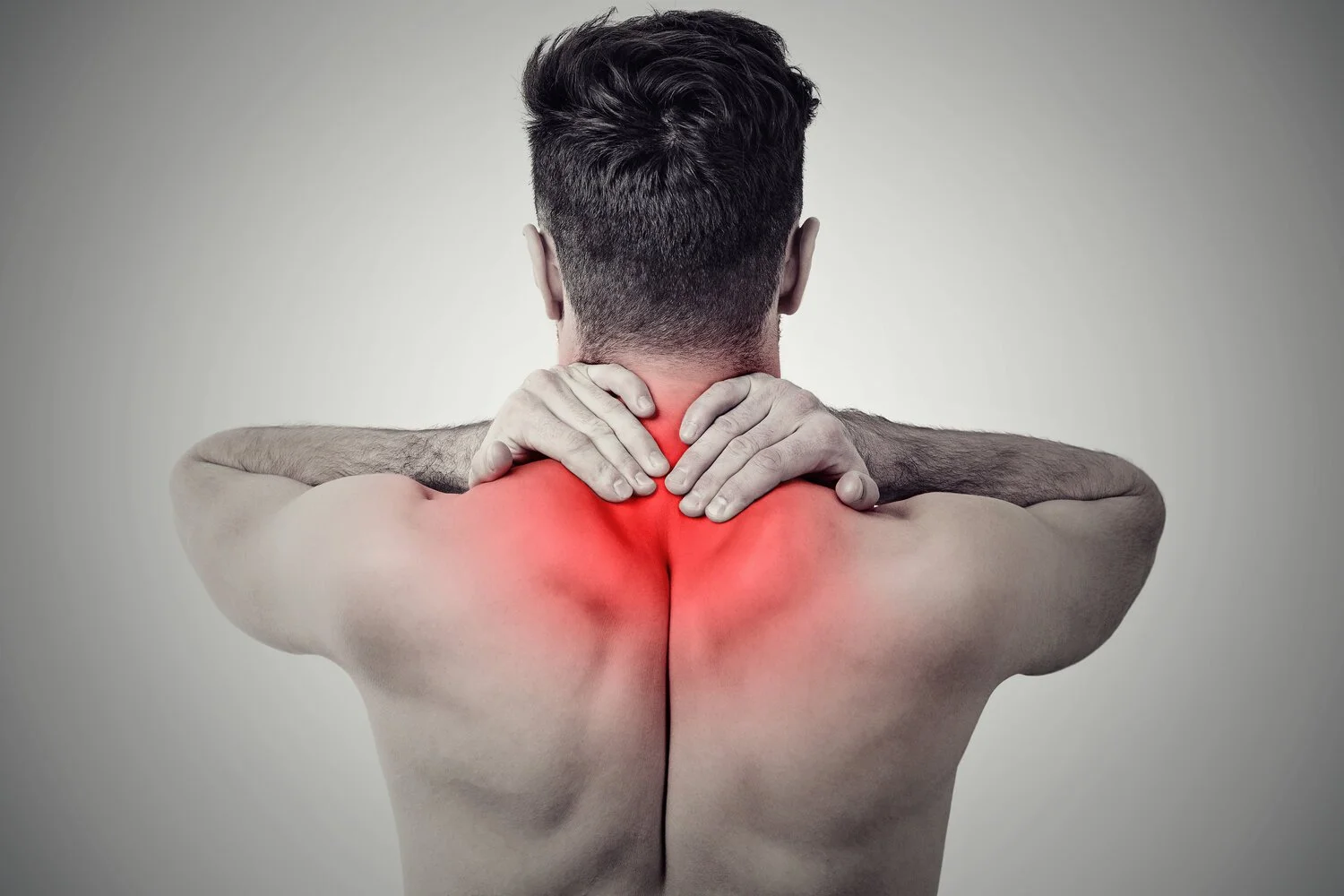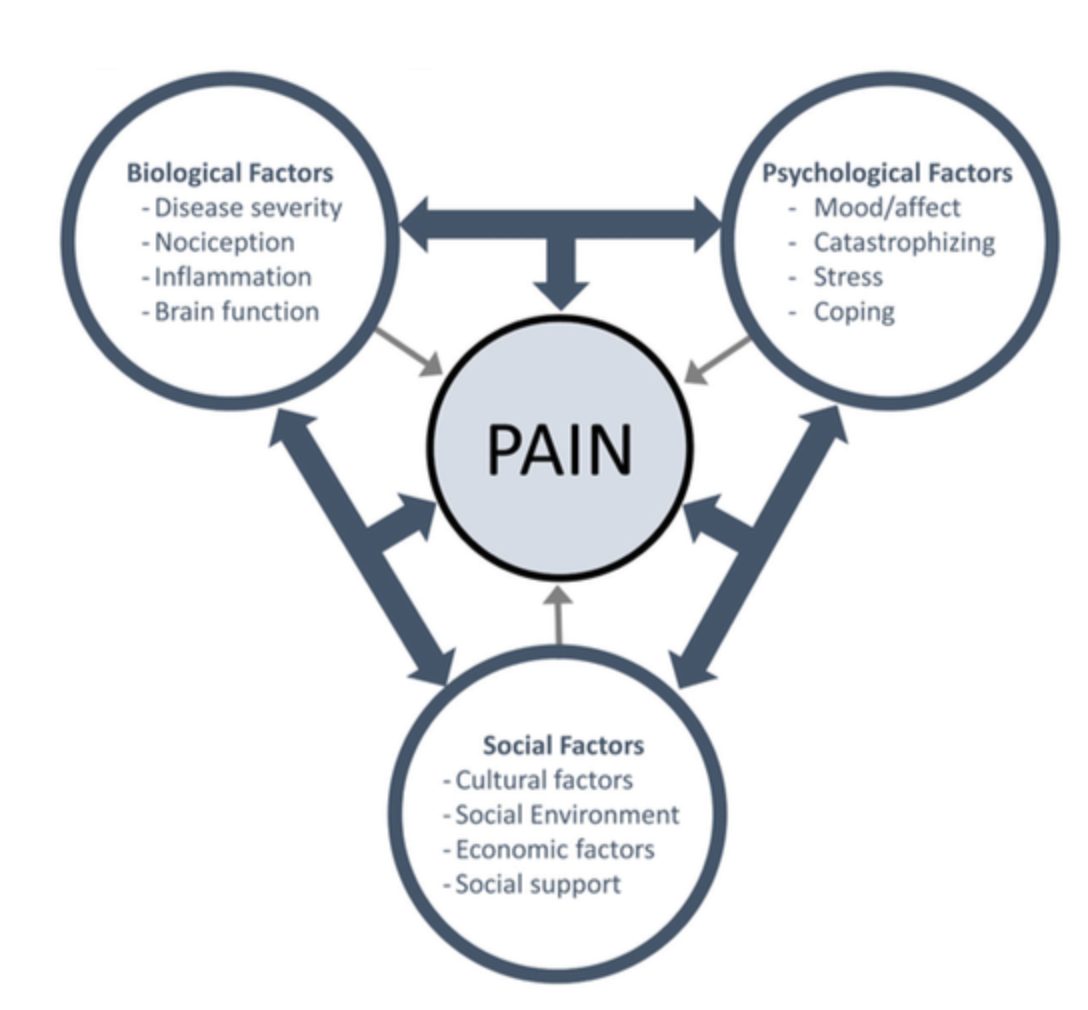CHRONIC PAIN: A SIMPLE PERSPECTIVE ON A COMPLEX SYSTEM
By Senior Coach Dave
Approximate Reading Time: 5-7min
Chronic pain can greatly affect your quality of life and mental state. It can cause brain fog , affect your mood, and alter your ability to navigate the world. We hope this article can instill some hope in you if you’ve been fighting chronic pain.
Imagine a scenario where a pair of identical twins accidentally bump their heads together. You may expect a similar pain response. However, the Bio-psychosocial model of pain would argue against this expectation. An individual perspective of experiencing pain is made up of biological, psychological and social components. Let’s break this concept down:
BIOLOGICAL
From a biological standpoint, your brain must interpret an external stimulus as painful in order for us to stop any activity that is causing us distress. This is vital to our survival; if we break a bone, the immense pain in the days and weeks going forward will prevent us from moving that particular segment so it can properly heal. It’s a simple concept. When our bodies are damaged (biologically), pain can occur to prevent further damage.
It would therefore make sense that pain must always signify there’s something wrong in our bodies. But this is not always the case.
The majority of people experience “wear and tear” from the aging process and do not feel pain (asymptomatic) as a result. This would defy the notion that damage always leads to pain. It is absolutely normal for adults to develop rotator cuff tears, degenerative disc disease, arthritis, and other structural changes with no signs of pain.
The severity of pain doesn’t always correlate with the extent of physical damage. Do you remember the last time you stepped on a lego piece? It’s an intolerable pain that is usually followed by inappropriate shouting and swift anger towards the person who left the torture device out. As the pain and swearing subsides, you’ll quickly go about your day forgetting about the whole ordeal as there was never any actual damage to your feet.
These are important concepts to understand that can alleviate potential anxious and fearful thoughts regarding pain.
PSYCHOLOGICAL
There is a story of a construction worker in the early 1900’s who ended up with a nail through his boot. The pain was overwhelming and had worsened by the time he had arrived at the hospital. Doctors had to administer a cocktail of heavy duty analgesics to alleviate the pain before they could attempt to remove his boot. Once the boot came off, doctors were in shock. The nail had completely missed his toes and traveled right in between. Studies in pain science and the placebo effect began to rise in popularity around this time.
This is not to state that all pain is imagined and should be ignored. When severe acute trauma occurs, pain is our most effective way of sending us to the emergency room and keeping us safe. This type of intense pain should not be dismissed and it’s likely you will inherently know when to seek medical help (hopefully.) The important takeaway message here is that our psychological well-being can greatly affect our pain signals and stop us from doing things that are actually beneficial for us. After our tissues have healed from the onset of injury, our brains can continue to be over-sensitive to pain signals. As a result, we persistently avoid movement in that area while our fear of further damage grows. One way we can change those pain signals is by slowly introducing a variety of movements in a safe setting to teach our brain that it’s ready to get stronger. Once you start adapting to more pain-free movement, you’ll also begin to gain more confidence in how you physically show up to the world.
Mental health, stress, nutrition, and sleep can all greatly influence our pain sensitivity. Always be aware of the basic pillars of health. Make a conscious effort to continue to do things you enjoy. It’s a double win if they can also decrease stress. Watch a funny movie, try some breath work and meditation, take some time off, sign up for a new class, spend some time in nature, etc. If these things can distract your mind even temporarily from the experience of pain, then you’ve created a wedge of hope to build from. Stay hydrated and focus on a non-inflammatory diet. Find a sleep routine that allows for proper rest. Taking care of yourself by staying consistent with this structure will optimize your health while decreasing your pain.
And last of all:
SOCIAL
We tend to avoid social environments when we’re in chronic pain; we’re afraid our suffering is a burden. I encourage you to avoid this route and continue to surround yourself with a supportive community of people. Don’t feel like you’ll be a burden to others especially when they’re your loved ones. Reach out and communicate what you’re going through. Ask for help when you’re finding it difficult to do things on your own. Reciprocity is a powerful connector and people need to feel needed and helpful. Wouldn’t you do the same for someone else?We are incredibly strong when we work together. When we feel more connected, it’s much easier to live in a more blissful state which will also ultimately alter the way you perceive pain.
If you’ve been ridden with chronic pain that’s affected your quality of life, I urge you to reach out for help. All it takes is finding a small wedge of opportunity that makes you feel like you’re moving in the right direction. Combine those small actions with consistency and you’ll begin to rewrite your story. Pain does not always equal damage. Keep finding ways to enjoy your life. Adopt a positive mindset knowing you will get better as long as you continue to persist. Enjoy your journey to pain-free living and the immense appreciation that follows.




